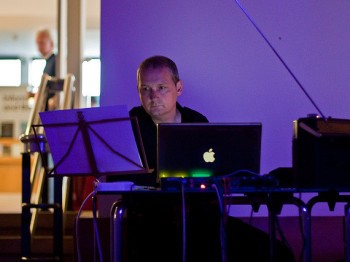
Music/Tech: Christopher Janney

In 1976, Christopher Janney was one of only four graduate students to enroll in MIT’s new masters program in Environmental Art, where he first began his formal experiments combining architecture and jazz under Otto Piene, Director of MIT’s Center for Advanced Visual Studies, founded in 1967. His thesis, “SOUNDSTAIR: The Nature of Environmental/Participatory Art,” was performed on many iconic stairways — from the Spanish Steps in Rome to MIT’s own Building 7 — in which the dancer’s footsteps would trigger sounds, altered in real-time by Janney. In essence, the entire building became a musical instrument.







